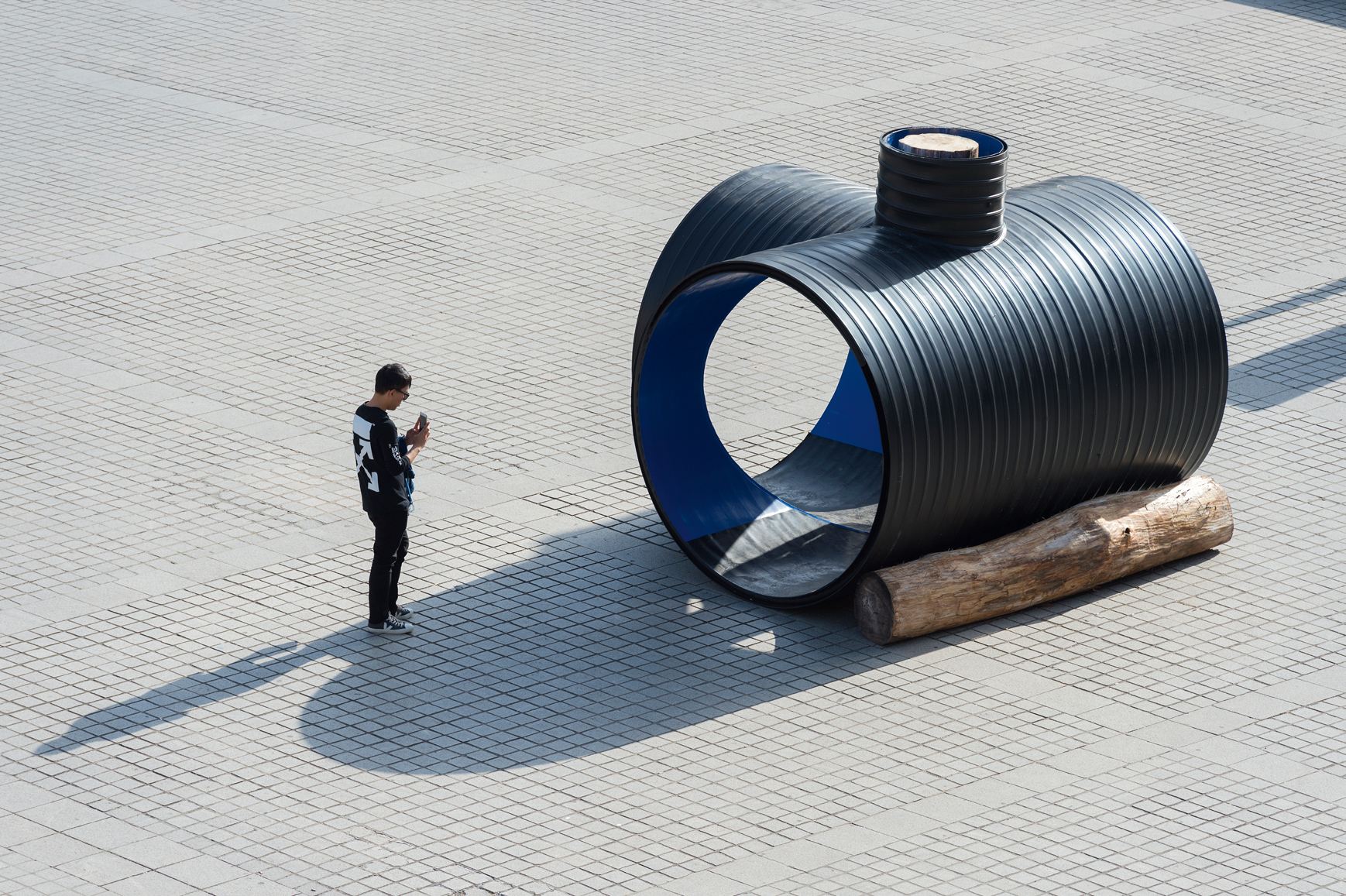Purple Magazine
— Purple 76 Index issue #29 S/S 2018
Tuazon oscar
a sculpture is a hole in the world
portrait by TODD COLE
interview by OLIVIER ZAHM
All artworks courtesy of the artist and Galerie Chantal Crousel, Paris
EVA PRESENHUBER, Zurich, New York / LUHRING AUGUSTINE, New York
 RAINWATER, 2017, THERMOPLASTIC PIPE, TREE TRUNKS, PHOTO BY MARC DOMAGE
RAINWATER, 2017, THERMOPLASTIC PIPE, TREE TRUNKS, PHOTO BY MARC DOMAGE
OLIVIER ZAHM — You were born Oscar Hansen on July 9, 1975, in a geodesic dome your parents built in the woods in Indianola, Kitsap County, Washington. Is that right? Can you tell us about your childhood?
OSCAR TUAZON — I grew up with the sense that a house is an experiment in living, and my parents were building a lot while I was a kid. We lived in a series of houses over the years in Indianola and rural Kitsap Peninsula, and my parents were part of a community of craftspeople, writers, and poets. A lot of…